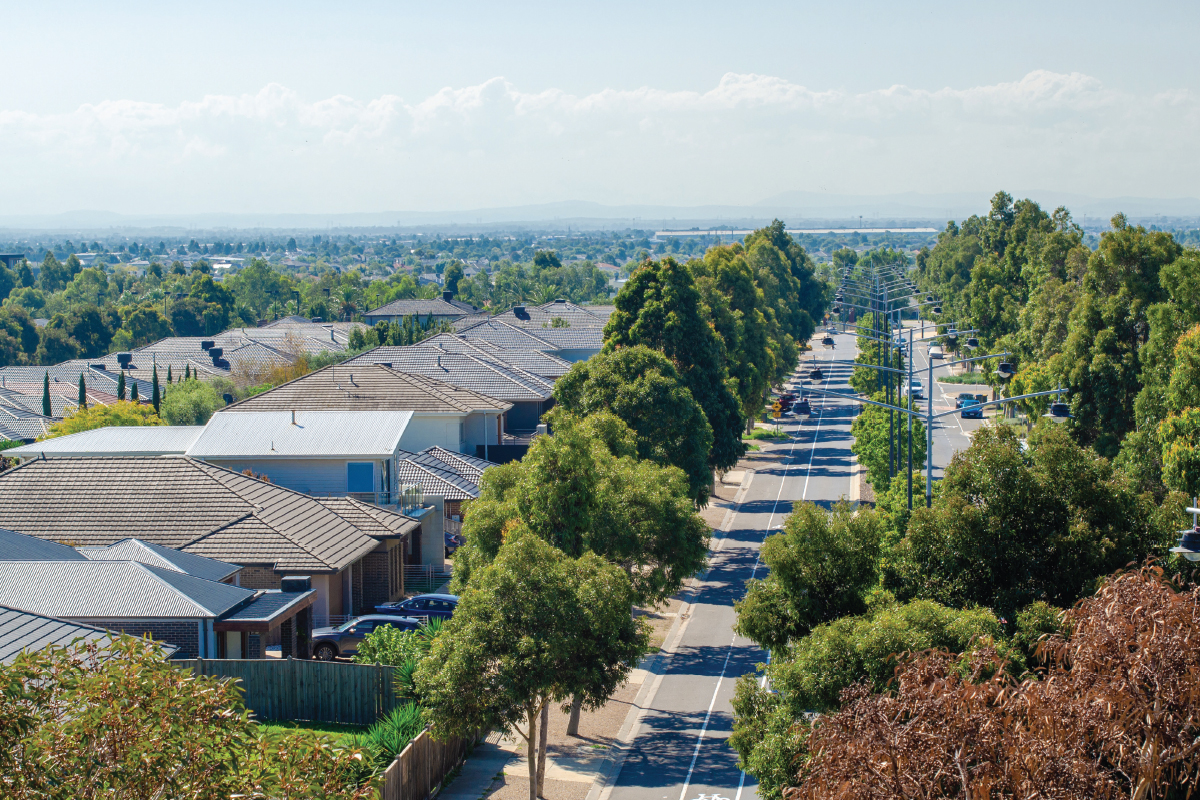Power to the people
WORDS Kate Edwards
As Australia rapidly moves towards a renewable energy future, the excess energy that household solar panels are currently producing is creating instability for the grid. But Ginninderry is paving the way for a solution: Canberra’s first community-scale storage battery.
Remember the severe storm that occurred in Belconnen in the very early days of 2022? Some residents were left without power for up to six days.
In the future, community scale storage batteries have the potential to protect local residents from this sort of scenario, by providing them with back-up power generated from the sun.
And now, Ginninderry is trialling its very own community-scale battery – the first of its kind in the ACT. The aim is to then pass on their learnings to help lead the way for other community batteries to be built, not just throughout Ginninderry, but Australia, in order to make best use of all the solar power we’re generating.
Currently, Australia has the highest uptake per capita of small-scale solar PV anywhere in the world*. Whilst this is excellent news, the expanding volume of renewable energy poses challenges for the stability of the grid, making the need for solar storage more important than ever.
Or as Jessica Stewart, Ginninderry’s Sustainability Manager puts it in more simple terms, “Because we’re generating so much solar, we’ve got lots of excess power during the day. If that power isn’t used by householders, then it goes back into the grid. But the grid can only absorb so much power at any one time. What that means is that a lot of that energy is then wasted. We need to be able to store that power and put it back into the grid when it’s needed during peak times.”
At the moment, State Governments and independent energy companies are rushing to build large utility-scale grid storage systems, whilst residents are encouraged to buy home battery systems.
However, there is also an in-between solution: one that promotes local energy stability and resilience, potentially cuts costs of owning a household battery, boosts local hosting capacity, and increases the amount of renewables that can be installed across our neighbourhoods.
Community batteries offer energy storage for around 100 households, with power capacities up to 5MW and have the potential to play an integral role in Australia’s transition to a decentralised grid.
As an all-electric suburb committed to renewable energy, Ginninderry has become home to the first operational community-scale battery in the ACT, which will test how community energy storage can work alongside residential solar systems and batteries.
“We decided relatively early on to future proof Ginninderry for community batteries by allocating a patch of land next to each padmount substation. Back in 2016, the size of a battery was the same as a large shipping container, but the one we’re installing in 2022 is
only 3 x 3 metres,” said Jessica.
The first community-scale battery will be owned and managed by CWP Storage and, working with Evoenergy, will use the battery to trial community-scale energy storage solutions as a way to mitigate the need for traditional network upgrades.
“The problem is, it can be expensive to upgrade substations to cope with the energy produced from solar,” says Jeff Allen, Business Development Manager at CWP Storage. “By installing smaller community batteries, like the one we’re trialling at Ginninderry, we can test the technology to prevent future homeowners from ultimately having to pay for those upgrades. Equally residential batteries are quite expensive. So, a community battery could really bridge that gap.”
In its early stages of operation, Ginninderry’s community battery will help control power flow in and out of the neighbourhood by storing and releasing power at certain times of the day and night.
“Essentially it reads the substation flows, and it can perform to level out the energy so that we don’t have peaks and troughs in the neighbourhood,” says Jeff. “Stage two is where we would like to virtually provide storage as a service to homeowners. This service would store excess residential solar power, ready for use when the sun goes down. But it could also keep the lights on for short periods of time if there should be a blackout caused by a storm for example.”
“Because these batteries can instantaneously swap between being able to store or generate power, it makes them a lot easier to control,” agrees Jess. “And so the benefit is, if you’ve got lots of these small batteries dotted around the community, you can be a lot more agile about where and
when your power can flow in and out – unlike a coal substation that can take many hours to ramp up.”
Beyond the capacity for stabilizing the grid, improving the quality of power and providing a back-up source if needed, community batteries offer additional opportunities and even revenue streams.
“There are all sorts of benefits we can provide to residents over time” Jessica Stewart agrees. “We could provide lower energy bills or even offer ‘shares’ in the battery. You could even use the energy stored and generated to say, power the local school oval lighting.”
Whilst community batteries have such fantastic potential, they are hindered by the fact that the market and Government legislation is lagging behind.
“Changes need to be made to policy, for us to be able to truly harness the power of community batteries,” says Jessica. “That’s why this trial is so important.”
“We’re pioneering a new wave of batteries that might eventually be rolled out throughout the nation. So we can share our learnings from the Ginninderry community battery with other stakeholders and hopefully provide a good use case for them to replicate in the future.”




